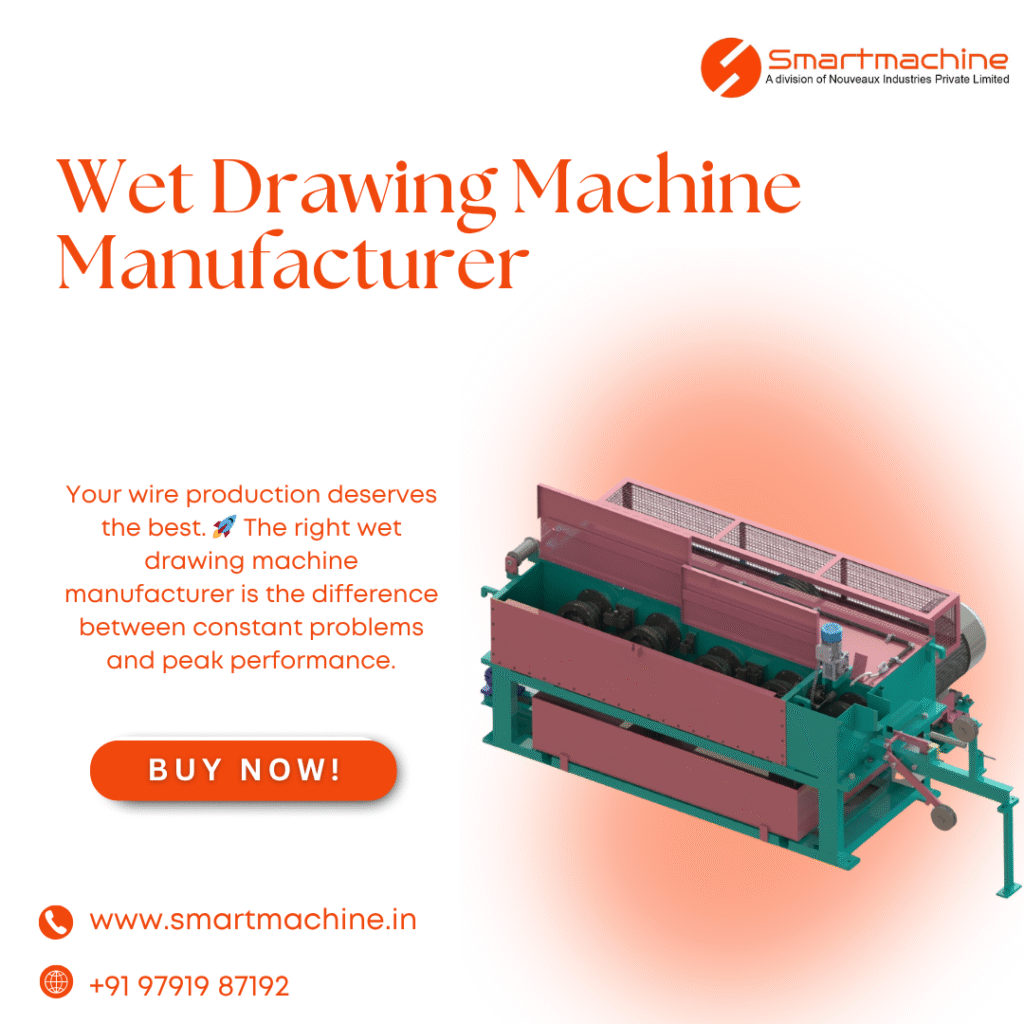In the world of wire production, precision, efficiency, and quality are non-negotiable. The wet drawing process is a cornerstone for creating fine, high-quality wire used in everything from automotive components to telecommunications and medical devices. At the heart of this process lies the wet drawing machine—a significant capital investment.
Choosing the right manufacturer for this machine isn’t just a purchase; it’s a partnership that will impact your productivity, product quality, and bottom line for years to come. So, how do you navigate this critical decision? This guide breaks down the key factors to consider.
1. Define Your Production Requirements: The Foundation of Your Search
Before you even look at manufacturers, you must have a crystal-clear understanding of your own needs. Any reputable manufacturer will start by asking you these questions:
- Input Material: What type of wire are you drawing? (e.g., steel, copper, brass, specialty alloys like tungsten or nichrome?)
- Final Wire Dimensions: What is your target finish size and tolerance? (e.g., from 1.6mm rod down to 0.05mm wire?)
- Production Volume: What is your required output in kilograms or tons per shift? This determines the machine’s speed and automation level.
- Process Specifications: Do you require single or multi-hole drawing? What is your required reduction sequence?
A manufacturer that doesn’t ask these detailed questions upfront may not be capable of delivering a tailored solution.
2. Assess Technical Expertise and Technological Innovation
Not all wet drawing machines are created equal. The best manufacturers are those who invest in R&D and understand the nuances of the drawing process.
- Patents & Proprietary Technology: Do they have patented features? This can be a sign of innovation, offering you a competitive advantage in areas like energy efficiency, wire surface finish, or die life.
- Control Systems: In today’s industry, precision is digital. Look for manufacturers that offer advanced PLC (Programmable Logic Controller) systems with touch-screen HMIs (Human-Machine Interfaces). These systems allow for precise control of speed, tension, and annealing parameters, ensuring consistent, repeatable quality.
- Focus on Efficiency: Ask about features designed to lower your operational costs. This includes energy-efficient motors, recirculating and filtration systems for the drawing lubricant, and automated pay-off and take-up systems that minimize manual labor.
3. Evaluate Build Quality and Component Sourcing
A machine is only as reliable as its weakest part. The durability and performance hinge on the quality of materials and components used.
- Frame and Construction: The machine frame should be robust, often from high-grade steel, to minimize vibration—a critical factor for fine wire drawing.
- Critical Components: Inquire about the brands of key components like:
- Motors and Drives: (e.g., Siemens, ABB, WEG)
- PLC and Control Systems: (e.g., Siemens, Mitsubishi, Allen-Bradley)
- Bearings: (e.g., SKF, FAG, NSK)
The use of reputable, internationally recognized components is a strong indicator of quality and ensures easier sourcing of spare parts.

4. Scrutinize After-Sales Support and Service
This is arguably the most critical differentiator between a good manufacturer and a great one. The machine will eventually need maintenance, and downtime is expensive.
- Installation & Commissioning: Do they offer expert supervision or complete installation? Proper setup is crucial for optimal performance.
- Training: Will they provide comprehensive training for your operators and maintenance staff?
- Spare Parts Availability: How quickly can they ship critical spare parts? A global manufacturer with a well-stocked parts warehouse is invaluable.
- Technical Support: Is technical support available 24/7? What are the response times? Look for manufacturers who offer remote diagnostics capabilities.
5. Consider Customization and Flexibility
While standard models might be cost-effective, your process may have unique requirements. The right manufacturer should act as an engineering partner.
- Customization Options: Can they modify standard designs to fit your specific floor space, integrate with existing equipment, or handle a unique material?
- Scalability: Can the machine be designed or later upgraded to handle a wider range of sizes or increased speeds to accommodate your future growth?
6. Review Their Reputation and Track Record
A manufacturer’s past performance is the best predictor of your future satisfaction.
- Client Portfolio: Ask for a list of clients, especially those in your industry. A manufacturer with a strong global presence often indicates proven reliability.
- Case Studies & Testimonials: Request specific case studies that demonstrate how they solved challenges similar to yours.
- Factory Visit: If possible, visit the manufacturer’s facility. This allows you to see their production quality, quality control processes, and corporate scale firsthand.
Your Manufacturer Selection Checklist
| Evaluation Criteria | Key Questions to Ask |
| Technical Capability | “Can you provide a technical proposal for my specific material and finish size?” “What is your machine’s tolerance and finish quality guarantee?” |
| Build Quality & Components | “What brands of motors, PLCs, and bearings do you use?” “Can I see the construction details of the machine frame and drawing blocks?” |
| After-Sales Service | “What is your guaranteed response time for technical support?” “Do you have a local service engineer or a dedicated parts warehouse?” |
| Cost & Value | “What is included in the quoted price? (Installation? Training?)” “What are the estimated energy consumption and maintenance costs?” |
| Reputation & Experience | “How long have you been building wet drawing machines?” “Can you provide contact information for two of your recent customers?” |
Conclusion: An Investment in Partnership
Selecting a wet drawing machine manufacturer is a strategic decision. The cheapest option often becomes the most expensive in the long run due to downtime, poor quality, and lack of support.
By focusing on a manufacturer’s technical expertise, commitment to quality, and unwavering after-sales service, you are not just buying a machine—you are investing in a reliable partnership that will drive your production efficiency and product quality for the next decade.
Ready to discuss your specific wet drawing needs? Contact our engineering team today for a personalized consultation and technical proposal.
